#bulkeley
Photo



Constance Gay dans "Vaincre ou Mourir" biopic de Paul Mignot et Vincent Mottez - sur les Guerres de Vendée pendant la Révolution Française et en particulier le Général François Athanase Charette de La Contrie dit "Charette" (1763-1796) - février 2023.
#films#style#chapeau#plumes#roux#Bulkeley#TalourDeLaCartrie#Charette#CharetteDeLaContrie#Mignot#Mottez
6 notes
·
View notes
Text
Dear Barbadians: About Plantations. Isn’t it time you renamed Bulkeley, et al. - St George - Barbados.
https://youtu.be/evQsCjDutCw
Isn’t the word PLANTATION an affront to you? Aren’t you ‘triggered’ when you hear that fuc*ing word? Aren’t you?! If you are not, it tells a sad, sad story about your mental health. Naked!!
Like/share/comment/subscribe on YouTube (it costs you nothing). Press the notification bell 🔔. NEW WhatsApp #2527225512
youtube
0 notes
Text

Barn owl - by Philip Bulkeley, English
958 notes
·
View notes
Text
Sometimes I think about the fact that one day I just decided, with nothing to back me up at all, that as a child James Barry went by ‘Peg’.
#greta was another contender but I think peg is youthful and less feminine#i have since asked my granny (80s) and she said that in cork most margarets of her generation went by peg but most of her mother's#generation were mag. i doubt i can find what was more common in the 1790s and my granny isn't from the same part of cork either#my own post#dr james barry#i called him Little Peg Bulkeley in one poem i wrote and it really stuck with me#maybe he was small as a child - as a man he is often called short and slight - and therefore he was little peg. maybe there was another#peg who lived near him that was big peg or tall peg or long peg#(my great grandfather edmond lived next door to another edmond with the same surname so he was known as long ned cos he was tall)#my writing about him keeps jumping between academic (where is the line between man & myth) and fiction and this is defintely fiction based#it turns out that building upon the myth is fun
3 notes
·
View notes
Text
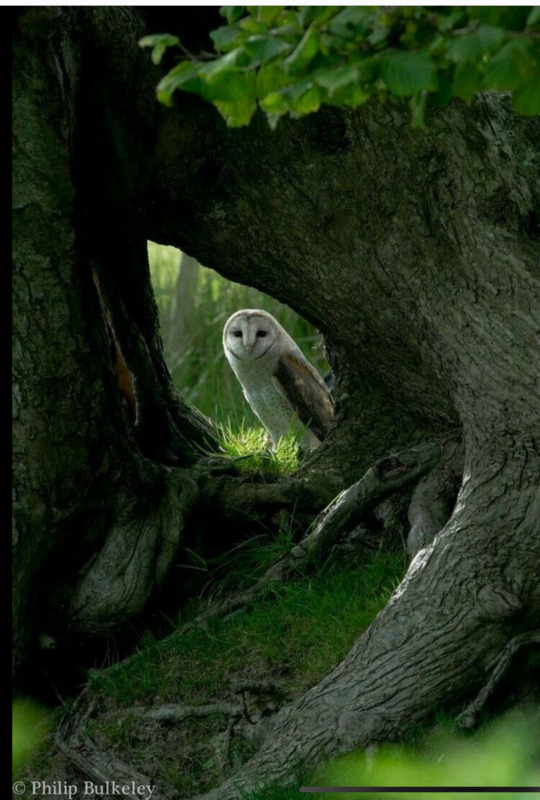
0 notes
Text
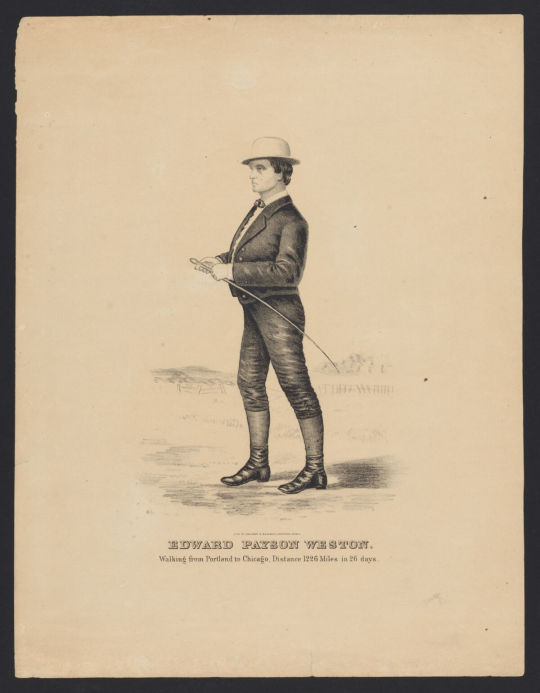
Happy National Walking Day!
Pedestrianism, a form of competitive walking, became popular in the late eighteenth and nineteenth centuries in Britain and Ireland, and spread in the United States.
Racers walked for hundreds of miles around a track in six-day races and the one who walked the furthest distance was the winner. In the United States, watching people walk was the most popular spectator sport in the late 1880s.
Edward Payson Weston (1839–1929) was an American pedestrian. He became famous when he walked 478 miles from Boston, Massachusetts to Washington, D.C. in 10 days and 10 hours, from February 22 to March 4 in 1861. During the walk, he faced snow, rain, and mud, fell several times, and ate while walking.
This portrait is entitled, “Edward Payson Weston Walking from Portland to Chicago.” It must be from 1867 when he covered over 1,200 miles in 26 days. He won a prize of $10,000, but also received several death threats from gamblers who bet against him. He lived to be 90 years old.
We have many other portraits of pedestrians like Weston in our collection of Portraits of boxers and other athletes!
Edward Payson Weston walking from Portland to Chicago
Kellog & Bulkeley, printer.
43cmx33cm
Harvard Fine Arts Library, Special Collections VSCO230.00310 VSCO230
HOLLIS number: olvwork734269
#NationalWalkingDay#SpecialCollection#EdwardPaysonWeston#Pedestrian#Walking#HarvardFineArtsLibrary#Fineartslibrary#Harvard#HarvardLibrary
19 notes
·
View notes
Text

Source: theatlantic.com - Philip Bulkeley photo
ℍ𝐚𝓵l נ𝐀 𝔳คĻǤẸ
16 notes
·
View notes
Text
93. The Wager, by David Grann

Owned: No, library
Page count: 257
My summary: The real life story of the wreck of the Wager, and the survivors’ struggle to return to England - featuring murder, mutiny, desperation, and the occasional hint of cannibalism.
My rating: 4/5
My commentary:
Yay, horrible things happening to people at sea! I love horrible things happening to people at sea! Well, I don't, but I love reading about that sort of thing. The Wager is a ship I'd never come across before (despite some allegations of survival cannibalism having occurred on the ship), but I picked it up because look at that cover, that is exactly the kind of thing that appeals to me. Mutiny and murder on the high seas? Yes please! This is a pretty good recounting of the true-life events - the narrative clearly introduces each person as they become relevant, and I didn't have any trouble following who was who and who did what. It was a pretty engaging read! If you're into Desperate Men On Boats, I'd highly recommend it.
The information here is mostly drawn from primary sources. It was something of a custom that, if you were a captain, officer, or other well-to-do man that had survived a Horrible Boat Incident, you'd write a book about it or publish the diaries you kept at the time. Many of the survivors published their accounts, including the then-midshipman John Byron, grandfather of Lord Byron. The gist of it is that the captain was taking the Wager around Cape Horn to join in fighting the Spanish, but the ship wrecked and stranded the crew. The captain grew more and more tyrannical, hatching an ill-conceived plan to steal a ship from the Spanish and rejoin the fighting, which culminated in him shooting another man in the face because he thought that man was agitating against him...and then denying him medical care when he survived the initial shooting, leading to an agonising death over days.
The gunner, John Bulkeley, mutinied against him, taking the bulk of the men and attempting to sail back to England. The captain and a few loyalists were left behind, and some of them managed to return to England after a period of captivity by the Spanish. Some of Bulkeley's group also made it, including Bulkeley himself. Their stories were contested when the Admiralty learned both sides, but ultimately nobody was charged with murder or insubordination and sentenced to death, as might have happened. It's an ugly tale in a lot of ways, but absolutely fascinating from a perspective of social class and privilege of the time. For the record, I'm with the mutineers. As I've said, the facts are told in a clear and engaging manner, switching focus from one group to another as primary sources allow, and in enough detail to satisfy curious minds. It was a good read!
Next up...I've put it off long enough. Back to the worst series I've ever read.
9 notes
·
View notes
Text

US Navy Warships in Eastern Mediterranean Shot Down 3 Iranian Regime Ballistic Missiles During Operations Last Night.
More than 70 Iranian Regime Drones Aimed at Israel were intercepted by USN Ships & Aircraft.
AEGIS Destroyers in the Eastern Med: USS Arleigh Burke, Carney, Roosevelt and Bulkeley.
2 notes
·
View notes
Photo

Un guépard monte sur une branche d’arbre pour marquer son territoire à la réserve nationale de Masai Mara.
PHOTOGRAPHIE DE INDIA BULKELEY
9 notes
·
View notes
Photo
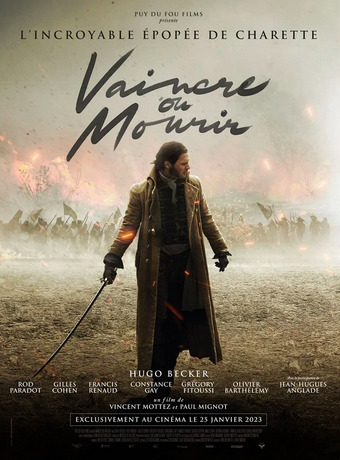
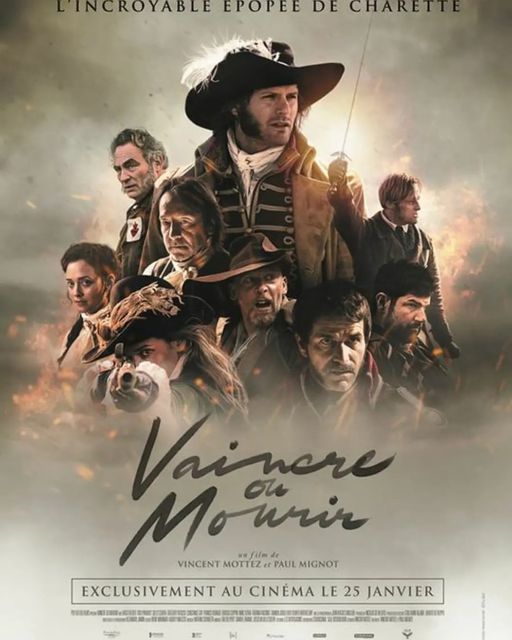
“Vaincre ou Mourir” biopic de Paul Mignot et Vincent Mottez - sur les Guerres de Vendée pendant la Révolution Française et en particulier le Général François Athanase Charette de La Contrie dit “Charette” (1763-1796) - avec Hugo Becker, Rod Paradot, Gilles Cohen, Constance Gay, Dorcas Coppin, Anne Serra, Francis Renaud, Damien Jouillerot, Olivier Barthélémy, Jacques Milazzo, Jean-Hugues Anglade, Grégory Fitoussi, Jonathan Demurger et le jeune Léon Durieux, février 2023.
#films#Biopic#hommage#RevolutionFrançaise#XVIIIe siècle#Charette#CharetteDeLaContrie#LouisXVI#LouisXVII#CharlesX#Bourbon#LaToucheLimouziniereDeLaRochefoucauld#HervouetDeLaRobrie#Couetus#bulkeley#LaRochefoucauld#TalourDeLaCartrie#Pfeiffer#Remaud#Maupillier#Lecouvreur#Ruelle#Haxo#Travot#Mignot#Mottez#Becker#Paradot#Cohen#Gay
1 note
·
View note
Text

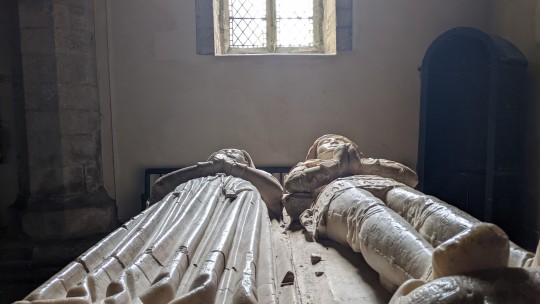


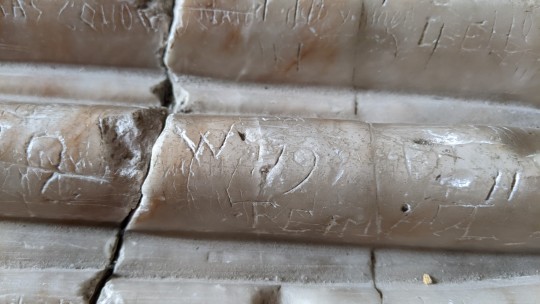
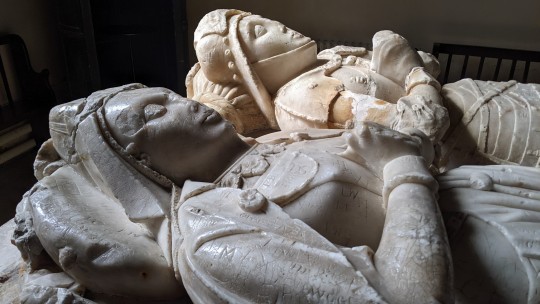
old graffiti on the alabaster tomb of William Bulkeley and his wife (died c. 1490) in Beaumaris
#tried to no avail to find the name of his wife :(#I think it may have been elen verch gwilym#beaumaris#diary
5 notes
·
View notes
Text
Last Names With Fairy Lore
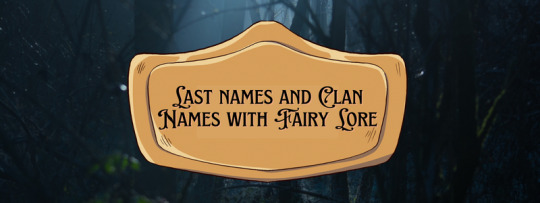
There are many clans and last names with fairylore, and when I come across them in my research, I try to remember to write them down. The list below are all the names that I have found so far.
Macphee, MacFee, MacFie, MacPhie
According to legend, Macphee, MacFee, MacFie, and MacPhie all came from the name Mac Dhubhshith (dubh-sith), which means “black fairy.”
“A family in North Uist is known as ‘Dubh-sith,’ Black fairy, from a tradition that the family have been familiar with the fairies in their fairy flights and secret migrations.”
Carmina Gadelica, Volume 2, by Alexander Carmicheal, [1900],

Munroe’s
Vougha is another name for Kelpies, which a family of Munroe’s are said to come from.
“And it is said that a family of Munroes had, many generations ago, married with the Vougha of Beann na Caltuinn, Their descendants had manes and tails till within the last four generations.”
Popular tales of the West Highlands

Pellings
“Pellings” supposedly came from the name “Penelop,” which is a fairy that that is in their bloodline.
“There are several persons and even families who are reputed to be descended from these people …. These children [Penelope’s] and their descendants, they say, were called Pellings, a word corrupted from their mother’s name, Penelope.
The late Thomas Rowlands, Esq., of Caerau, in Anglesey, the father of the late Lady Bulkeley, was a descendant of this lady, if it be true that the name Pellings came from her; and there are still living several opulent and respectable people who are known to have sprung from the Pellings. The best blood in my own veins is this fairy’s.’”
Celtic Folklore: Welsh and Manx (Volume 1 of 2) by Sir John Rhys (1901)

Macpherson
The black chanter of Clan Chattan was supposedly gifted to a Macpherson by a fairy admirer. Read more about it here.

‘Feadan dubh Chlanna Chatain,’ the black chanter of the Clan Chattan, is said to have been given to a famous Macpherson piper by a fairy woman who loved him."
Carmina Gadelica, Volume 2, by Alexander Carmicheal, [1900]

Mackay
A Mackay was also given something from a fairy sweetheart; though this time it was a flag. Sadly, I can’t find any further information about this flag.
"The Mackays have a flag said to have been given to a Mackay by a fairy sweetheart."
Carmina Gadelica, Volume 2, by Alexander Carmicheal, [1900],

Macleod
The Macleods claim two fairy items, the fairy flag in Dunvegan, and a chanter called “The Silver Chanter of the Fairy Woman.” There is an audio recording from 1969 that mentions the fairy flag here. This is an item you can still go see at Dunvegan Castle.

"The famous fairy flag at Dunvegan is said to have been given to a Macleod of Macleod by a fairy woman. The Mac-Crimmons of Bororaig, the famous pipers of the Macleods of Macleod, had a chanter called ‘Sionnsair airgid na mna sithe,’ the silver chanter of the fairy woman."
Carmina Gadelica, Volume 2, by Alexander Carmicheal, [1900],

MacCrimmon
John MacCrimmon was given a chanter by a fairy sweetheart. There is also an audio recording about this from 1954 here, though it is not in English.
"As ‘Iain Og,’ young John MacCrimmon, was practising in ‘Slochd nam piobairean,’ hollow of the pipers, at Bororaig, the lovely fair
Thy beauty and the music of thy pipe,
Have brought a fairy sweetheart to thee,
I hand thee now the silver chanter,
That will be melodious ever under thy fingers.
The story of young John and his fairy sweetheart is very fine and highly poetic."
Carmina Gadelica, Volume 2, by Alexander Carmicheal, [1900],

MacNamara, O’Sullivan, O’Flaherty, MacKerra, Gossocks, McVeaghs.
O’Flaherty and O’Sullivan families of Kerry, MacNamaras of Clare are all said to be the offspring of mermaids.
"So, too, did the O’Flaherty and O’Sullivan families of Kerry and the MacNamaras of ClareStrange and Secret Peoples: Fairies and Victorian Consciousness"
By Carole G. Silver (2000)
"A MacKerra of MacGhirston, in Galloway, married a merman; another Galloway family, the Gossocks, and a family in Sutherland, the McVeaghs, are held to be the descendants of a mermaid and a fisherman"
Sea enchantress; the tale of the mermaid and her kin by Benwell, Gwen (1961)

MacCodrum
The entire MacCodrum clan of the Outer Hebrides claim to be descendants of a selkie bride.
"…while the entire MacCodrum clan of the Outer Hebrides, known as “The MacCodrums of the Seals.” claimed to be the offspring of a union between a selkie and a fisherman. In this case, the sign of preternatural parentage was not delicate beauty but an hereditary horny growth between the fingers that made MacCodrum hands resemble flippers."
Strange and Secret Peoples: Fairies and Victorian Consciousness
By Carole G. Silver (2000)
There is also a MacCodrum who saw a ghost (audio recording from 1966 here)

Urqhart
A family of Urqharts are also descendants of selkies.
"...the Folk-Lore Society, in 1895, studied magic lantern slides taken of Baubi Urqhart of the Shetland Islands. On the basis of family stories and a seallike appearance, Baubi claimed to be the great-great-granddaughter of a selkie captured by her ancestor."
Strange and Secret Peoples: Fairies and Victorian Consciousness
By Carole G. Silver (2000)

Mor
The Mor’s can never be drown thanks to a promise made with a mermaid
"They acquired this immunity through the foresight of their father, James Mor, who in 1883 was still living to tell the tale’. He found a mermaid’s belt, and withheld it until she promised that none of his family should ever be drowned."
Sea enchantress; the tale of the mermaid and her kin by Benwell, Gwen (1961)
As well as that, a Dòmhnall Mòr was constantly lifted by the fairies
“The fairy host used to lift Dòmhnall Mòr. He would have to leave the cèilidh house every night. He went to Canada, but found them waiting for him there. He never got away from them.”
Audio Recording Link

MacVurichs
MacVurichs of Uist have something to do with the supernatural, but the recording is in gaelic and I can’t understand it.

MacArthur
According to this recording from 1969 there is a certain place that no MacArthur should pass by. Why? Well, according to the story, Neil MacArthur was on his way home when he saw a woman he thought he knew. He put his arms around her, only to realize she had no nostrils (a washerwoman description). He was compelled by her magic to meet with her over six months, and would have died on his last visit, but his mother-in-law placed protective charms on him.
"The woman put a curse on Neil’s descendants. She said that evil would happen to them if they passed a certain place after sunset. The contributor says that the MacArthurs heed this warning to the present day [1969]"
AN ENCOUNTER WITH A FAIRY WASHERWOMAN

Laings
The Laings are supernaturally good workers because one of their ansestors was trapped in a fairy mound. While there, she was forced to bake until a fairy helped her escape. She left with the new ability.
There is an audio recording from 1978 here.

Widwick
After helping deliver a baby she did not at the time know was a fairy, a midwife in Yell named Merran Widwick accidently got fairy oinment in her eye (giving her the ability of second sight) and was blinded in that eye. Audio recording here, and another here.
Merran Windwick, only recently deceased [in 1972], was a great midwife and healer who lived in a remote area of North Yell near high banks [cliffs]. One night she returned home late and was sitting down to her supper when there was a tap at the door. Her sickly daughter answered it to a strange man. Merran cursed the people who were annoying her so late, but the man said that he lived not far from her and persuaded her to come to help his wife, who was having a child.
He took her to the clifftop and made the stone rise to reveal a staircase. She went into the fairy dwelling and delivered the child. The fairy had no money to pay her, but instead offered her long life or knowledge beyond all understanding. She chose knowledge and from then on knew everything that was to pass. Years later she went to a roup [public auction] to sell a cow and saw the stranger again. He asked her which eye she saw him with. She told him and he blew in the eye; she lost her sight in that eye.
link

Coutts
The grandfather of Maalie Coutts lived in Mid Yell found a fairy child (of a trow) and took it home, but had to release it when it threatened to blow down the house with wind.
Link to audio recording here.

Harker
Henry Harker obtained an endless fairy ointment, but the magic failed when money was charged for it.
Audio recording link here.

Sgrob
The fairy host used to lift Niall Sgrob and they once asked him to kill a girl.
They used to take Niall Sgrob from Barra with them. He would get a feeling when they were coming and he had to go with them. One night a girl was milking at a house which Niall often visited. The cow she was milking dropped dead. The next night Niall Sgrob said he had killed the cow. The fairy host had asked him to kill the girl with a fairy needle. He killed the cow instead. The host saw the blood and thought the girl was dead. He told them they should always shut the door when milking.
link

Buidhe
A Buidhe went into a fairy hill, and was trapped there for seven years until another human rescued him.
"Greusaiche Buidhe went to get whisky for a wedding and went into a fairy hill. He was there for seven years, until another man rescued him. He thought he had only been there a short while."
link

That’s it! Did you spy your name or clan on there? Sadly, I am part of the “has no fairylore” club haha.
Divider made by elfdior
#fairy#faries#fae#faeries#faerie#fae folk#faefolk#sidhe#aossidhe#ScottishFolklore#scottish mythology#scotland#scottishfolklore#folklore#myths#mythology
8 notes
·
View notes
Text

The Ladey Bulkeley Phillips, 1840
Portrait of Lady Eliza Gordon; nearly whole length, seated looking to left, one hand holding handkerchief, the other holding the armrest; wearing elaborately ribboned dress; in octgaonal frame; after A E Chalon; illustration to Heath's 'Book of Beauty' (1840)
Stipple, etching and steel engraving.
3 notes
·
View notes
Text

Henry ‘Chips’ Channon: The Diaries (Vol. 1), 1918-38, entry for 30th January 1923
—
Tuesday 30th January
Gerry Wellesley¹ has been to stay with me. I wish I could help in this odd tangle. His wife the pinched poetic Dottie ... could anyone be better named? ... suddenly ordered him from her house and their comparatively happy life has come to an end. They had much in common: both are highly strung, selfish, exotic and ultra-modern, with a strain of commonness. Lady Scarbrough² says she cannot understand why her wayward daughter³ should have left Gerry ... ‘he doesn’t drink, nor is he fond of gamblin’’ ... the Victorian and proper attitude to take. There is much bitterness. The Duchess of Wellington,⁴ that old cook with a Cyrano nose, has called her daughter-in-law a ‘borderline case’, which I think she is. Gerry has seized the children,⁵ two little Hoppners⁶ with deep lapis eyes; unfortunately she has the money and refuses to make settlements. One hears of nothing else in their little milieu of the super-exotic and under-sexed. She has written to me to use my influence with Gerry ... I am fond of him — why, I don’t know, as he is pompous, treacherous and vain; yet his amazing memory and knowledge and wit and his tired unhappy Pierrot⁷ manner appeal.
—
1. Gerald Wellesley (1885–1972), by courtesy Lord Gerald Wellesley from 1900 to 1943, was the third son of Lord Arthur Wellesley, later 4th Duke of Wellington; Wellesley, a diplomat and then an architect, succeeded his nephew as 7th Duke in 1943. He married in 1914 Dorothy Violet Ashton (1889–1956), a poet who was praised by W. B. Yeats; they separated in 1922 but never divorced, and she became the lesbian lover of Vita Sackville-West. Wellesley would be commissioned, not entirely happily, by Channon to remodel his houses in London and Essex. He was homosexual and, as a staff officer in the Second World War, was known as ‘the Iron Duchess’.
2. Lucy Cecilia ‘Cissie’ Dunn-Gardner (1860–1931), daughter of Cecil Dunn-Gardner, married in 1899 as her second husband the 10th Earl of Scarbrough.
3. From Lady Scarbrough’s first marriage to Colonel Robert Ashton.
4. Kathleen Emily Bulkeley Williams (1848–1927), wife of the 4th Duke.
5. Arthur Valerian Wellesley (1915–2014), by courtesy Marquess of Douro from 1943 to 1972, when he succeeded his father as 8th Duke of Wellington, and became a Knight of the Garter in 1990; and Elizabeth Wellesley (1918–2013), by courtesy Lady Elizabeth from 1943.
6. John Hoppner RA (1758–1810) was a celebrated portrait painter in England in the late eighteenth and early nineteenth centuries.
7. Clown-like.
#chips channon#channon diaries#1923#gerry wellington#dorothy wellesley#cissie scarbrough#kathleen wellington#arthur wellington#elizabeth wellesley#lavender marriage alert!!#🕰️
4 notes
·
View notes
Text
I was suddenly struck by the question of language - it's frequently stated that the Irish language never recovered from the Famine but Dr James Barry - having left Cork City around 1804 - wouldn't have been impacted by that.
Aidan Doyle wrote a fascinating piece on Language and Literacy in the Eighteenth and Nineteenth Centuries (published by Cambridge University in 2018). Simply put, his general belief was that everyone bar the very highest and lowest parts of society were bilingual, and even if people couldn't speak both languages they could often understand them. Most people who could read and write did so in English with little being written Irish though what was, was eagerly read much to the disappointment of the Church who were pushing only the Bible.
Dr Barry could write in English before leaving for the UK as demonstrated by the letter he wrote to James Barry RA on behalf of his mother. The Bulkeleys also came from Cork City where a large number of boats docked which suggests that they would have been more likely to know English anyway. But did he know Irish? Is there anything to suggest he didn't?
Several people described Barry as being "Scotch" in appearance and temperament. I wonder if this was at all impacted by his accent or dialect - did Barry improve his English while in Edinburgh and therefore pick up a Scottish accent and turn of phrase? Or did people mistake his Cork accent and Irish for a Scottish one and Gaelic? Did he even know Irish, coming from a family in Cork City where Irish would be less used? I like to think that he did.
#yes it is available on sci-hub please do use it. 27 pages. v informative.#i am once again being weird about#dr james barry#listen. he was IRISH and that matters. it matters to me it matters to irish history and it nearly definitely mattered to james barry#my own post#there's a lot about him that i think has yet to be explored because the people doing the looking aren't irish and miss certain nuances
9 notes
·
View notes